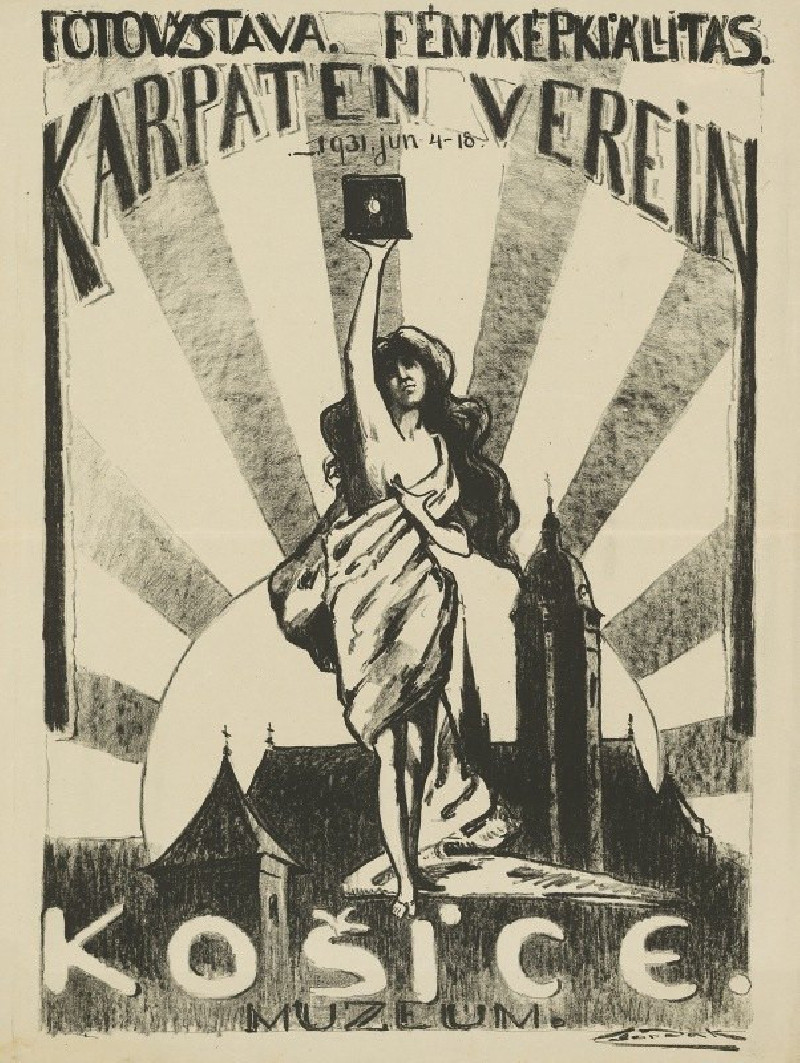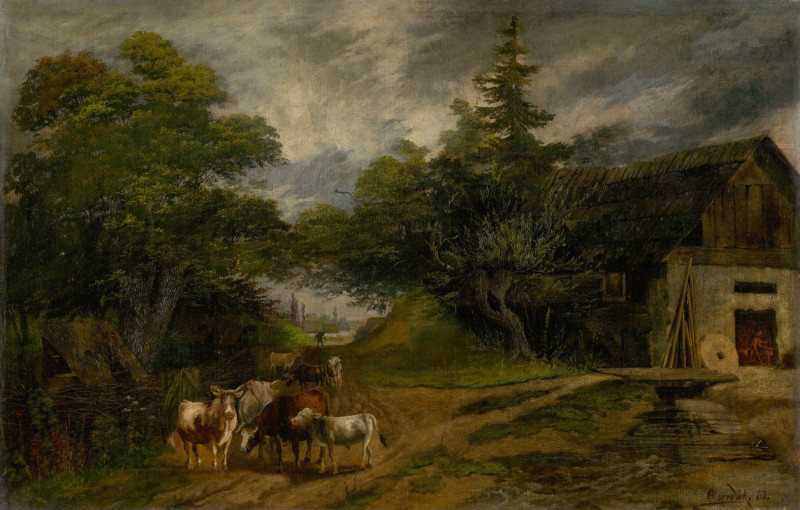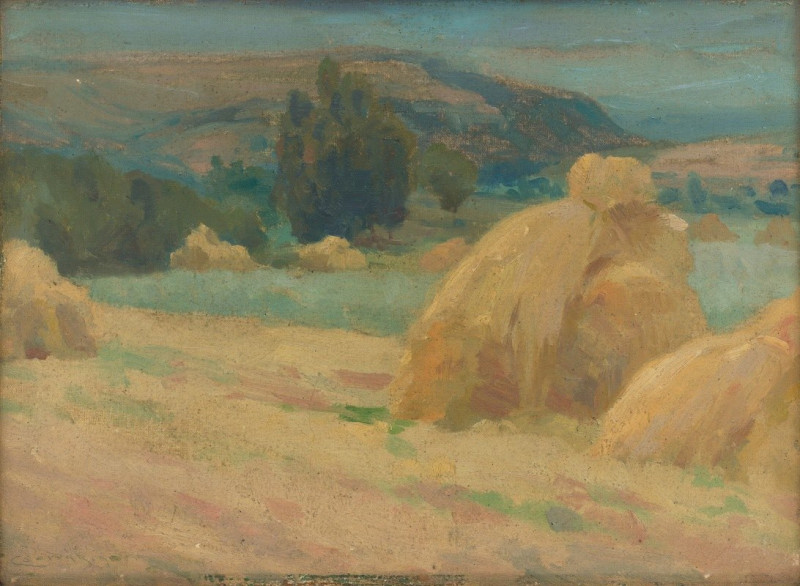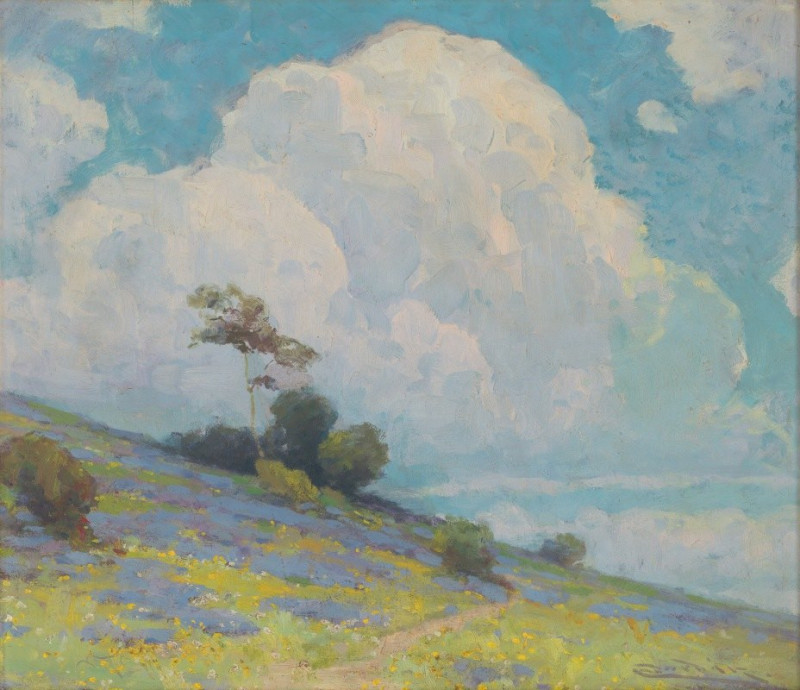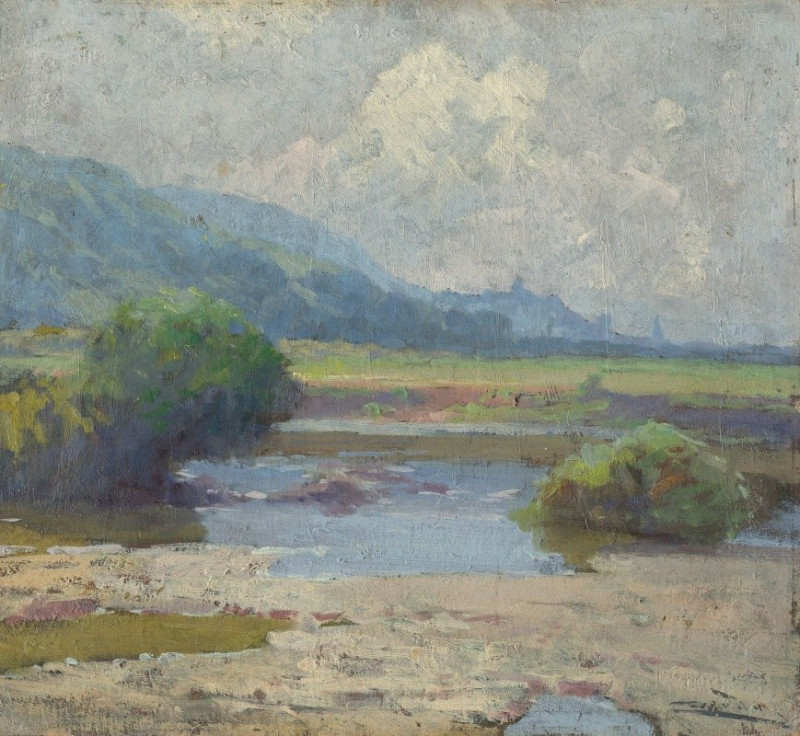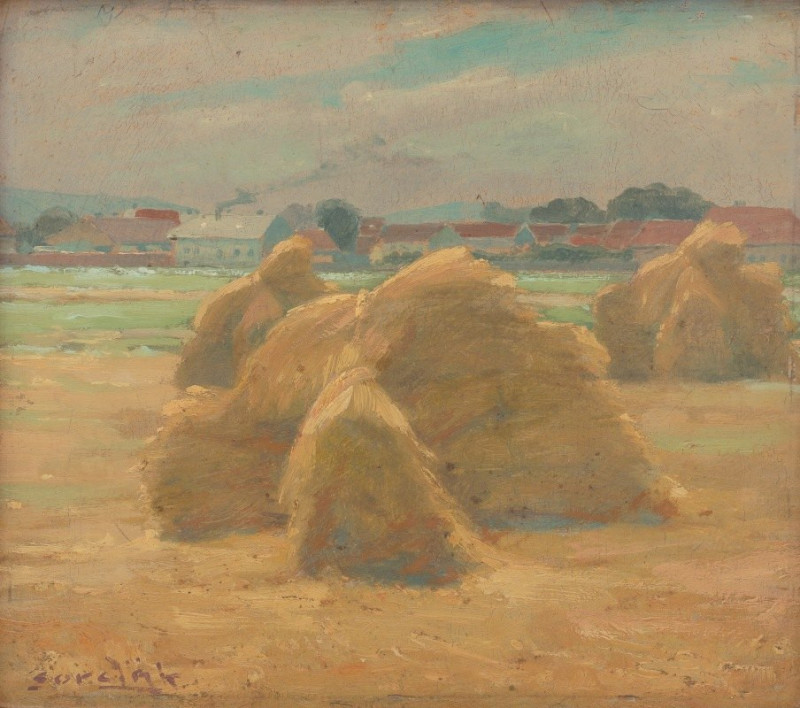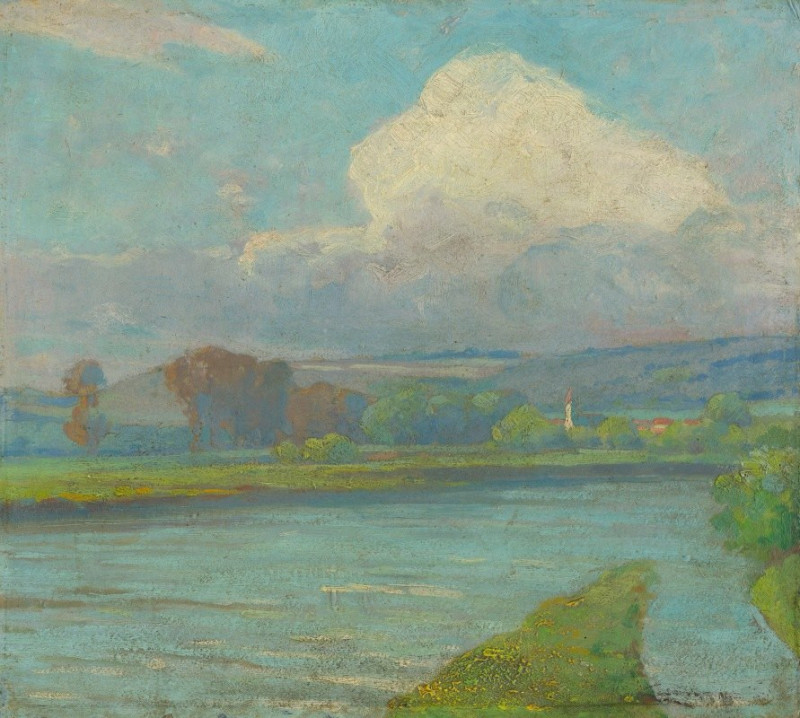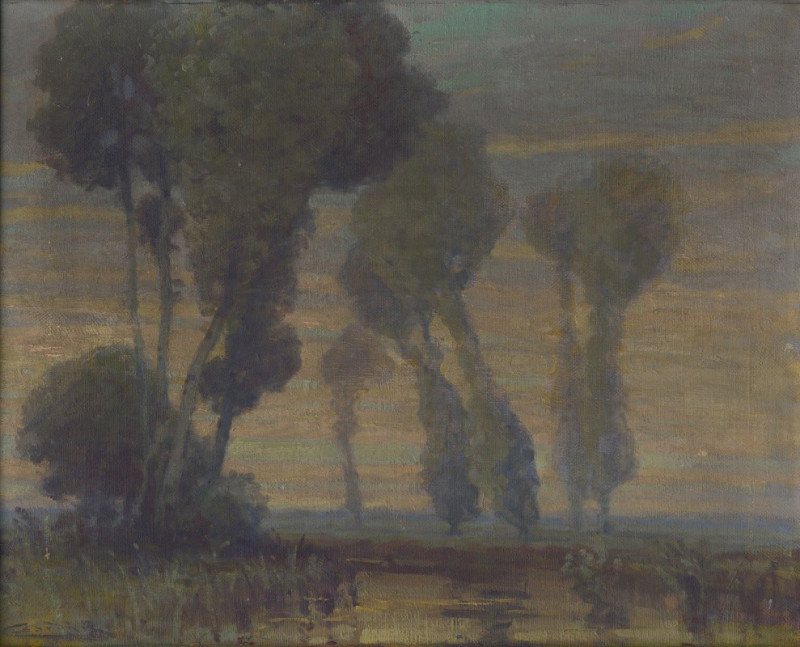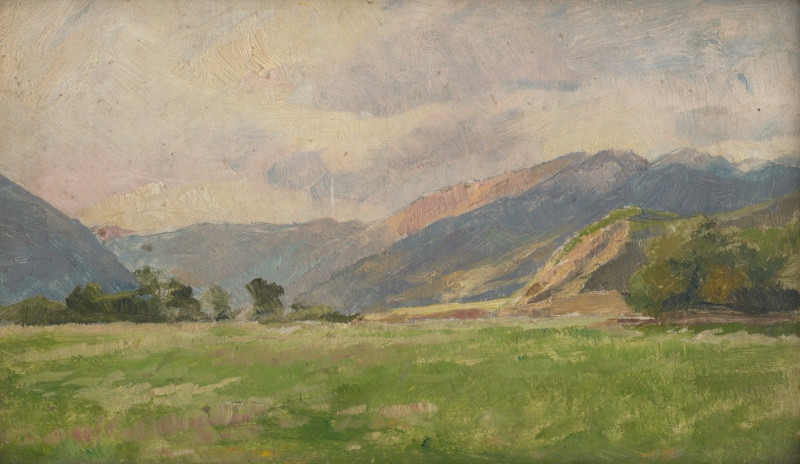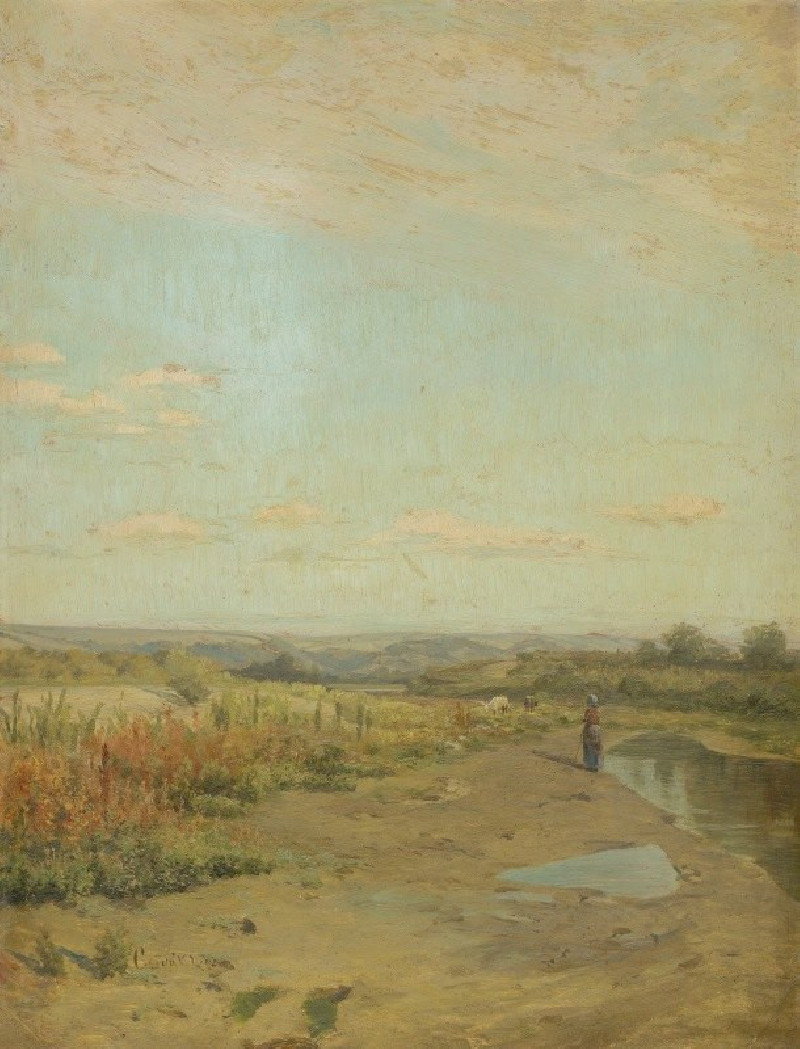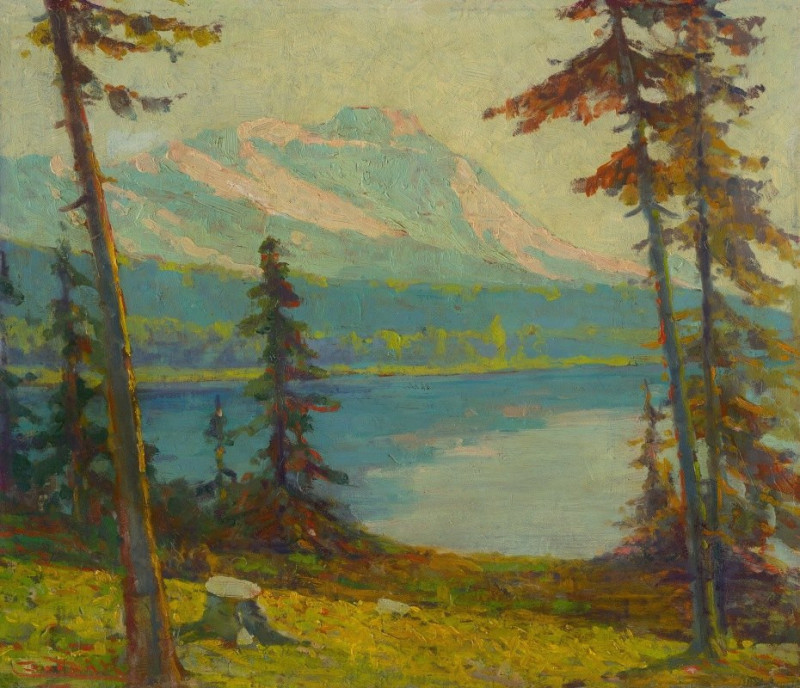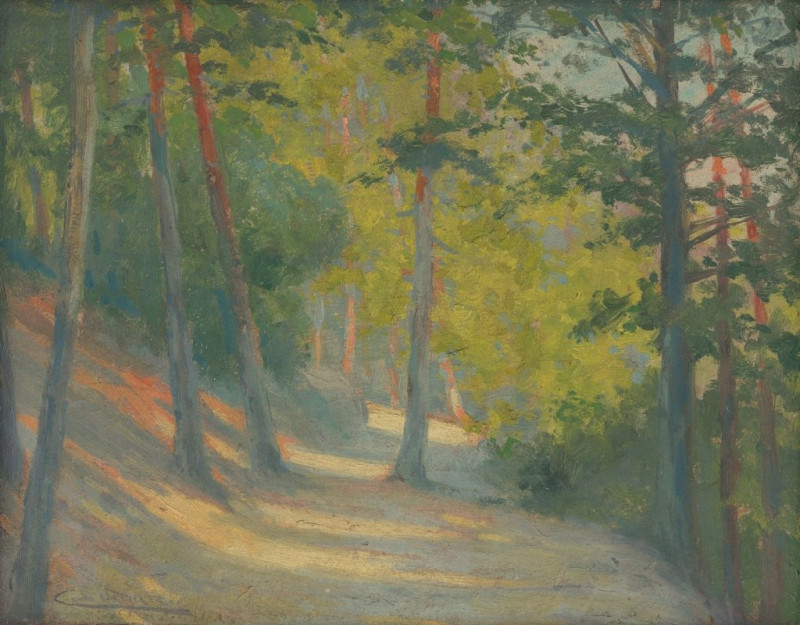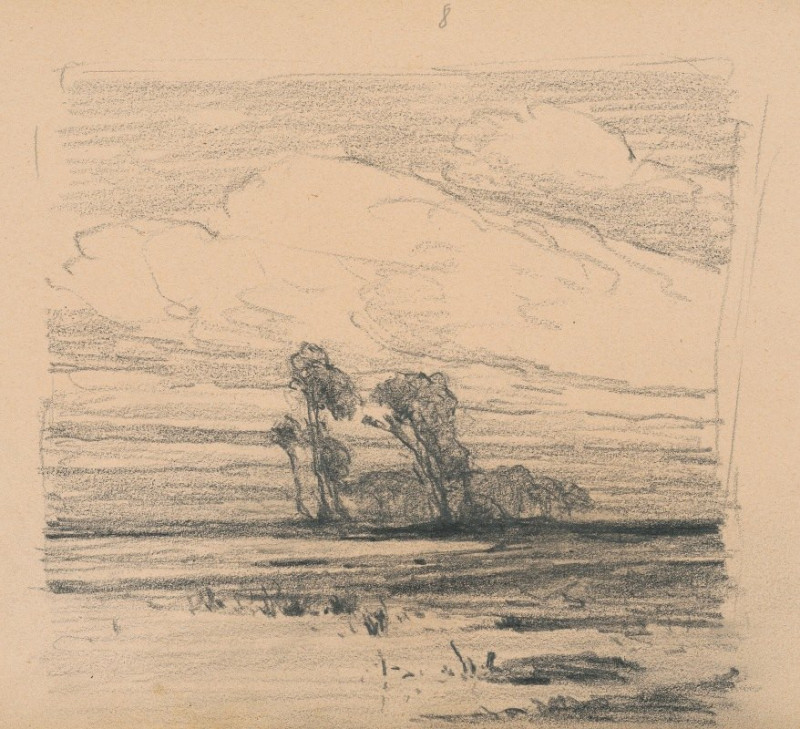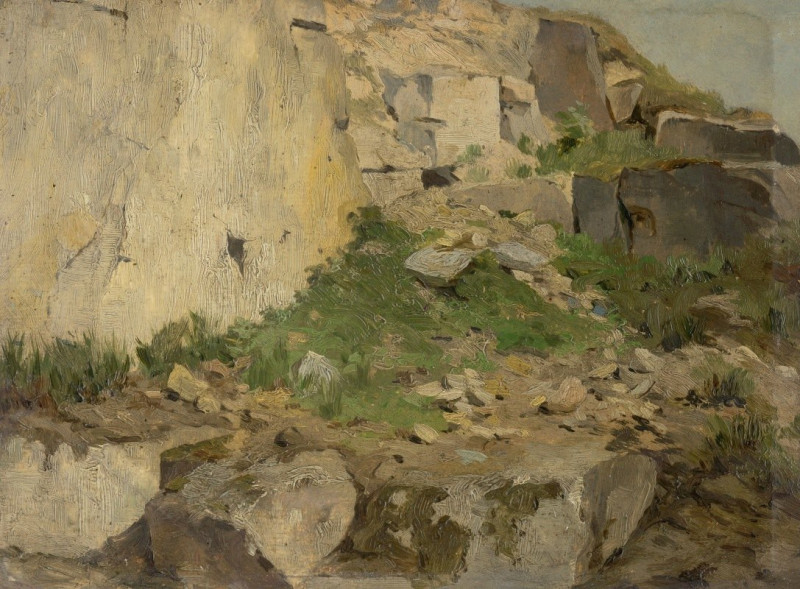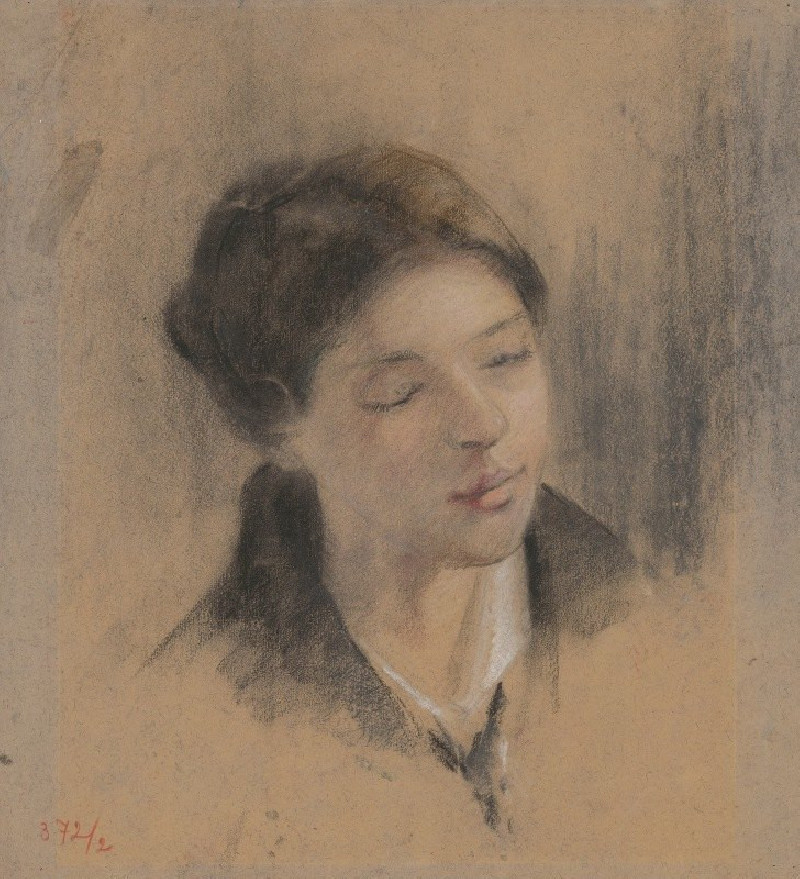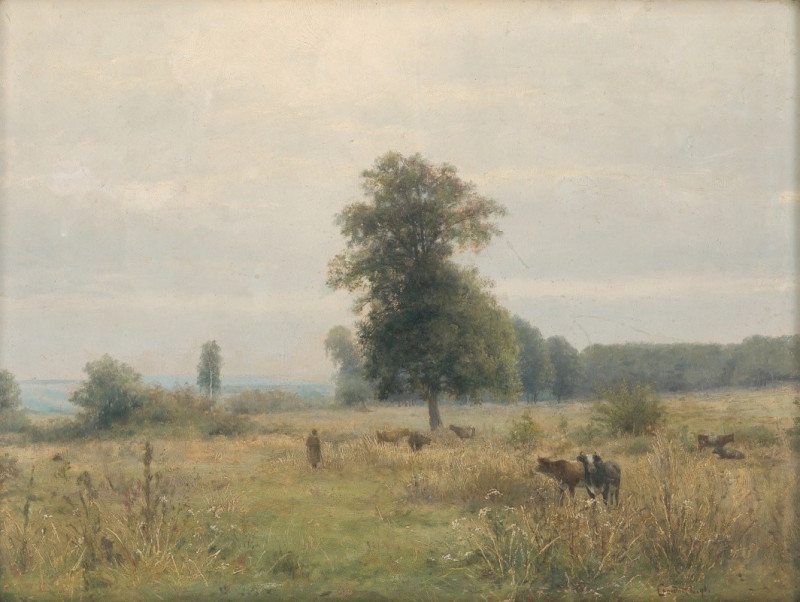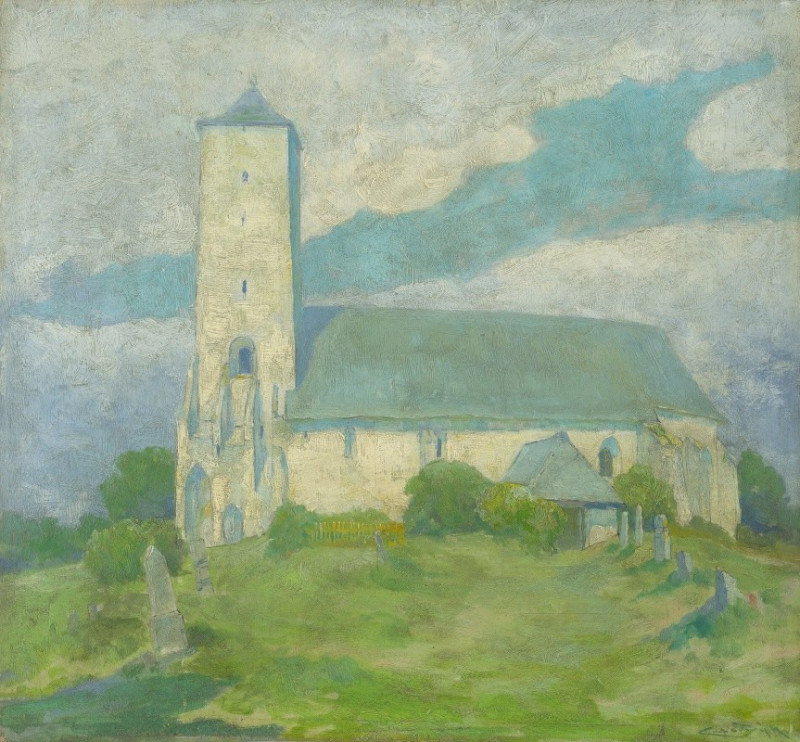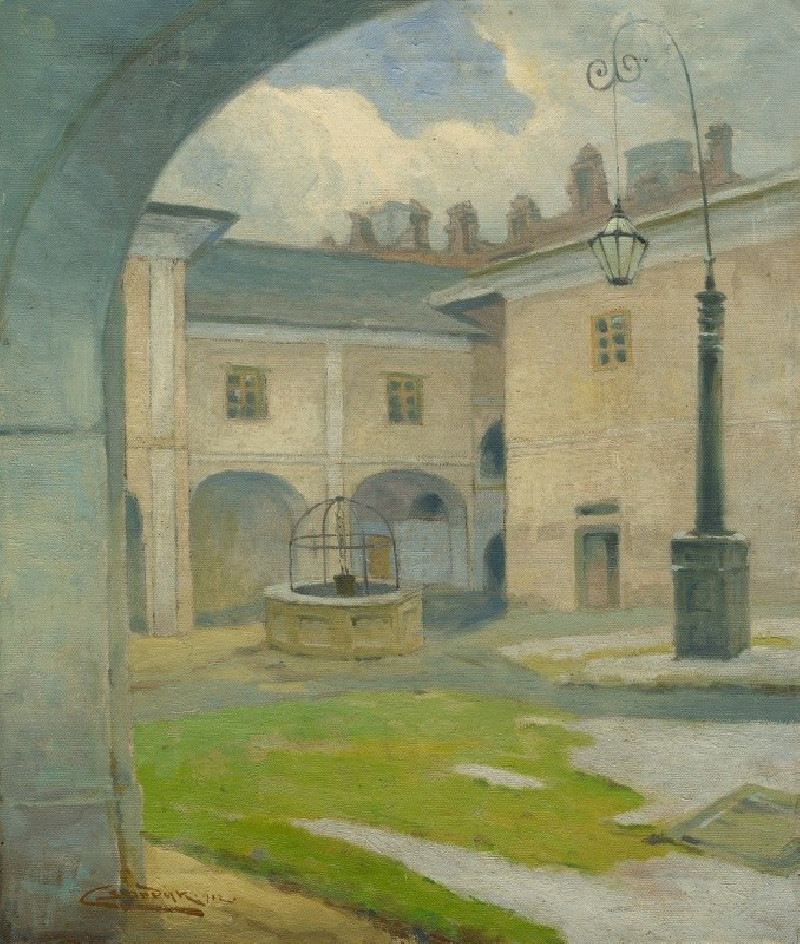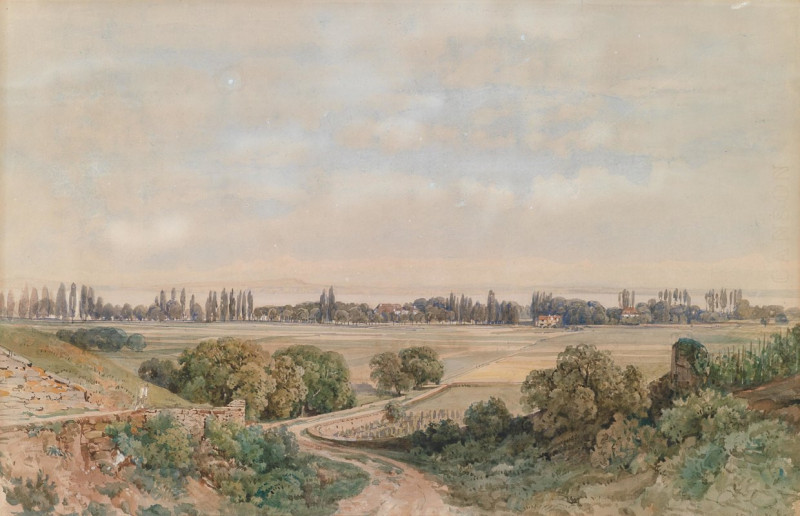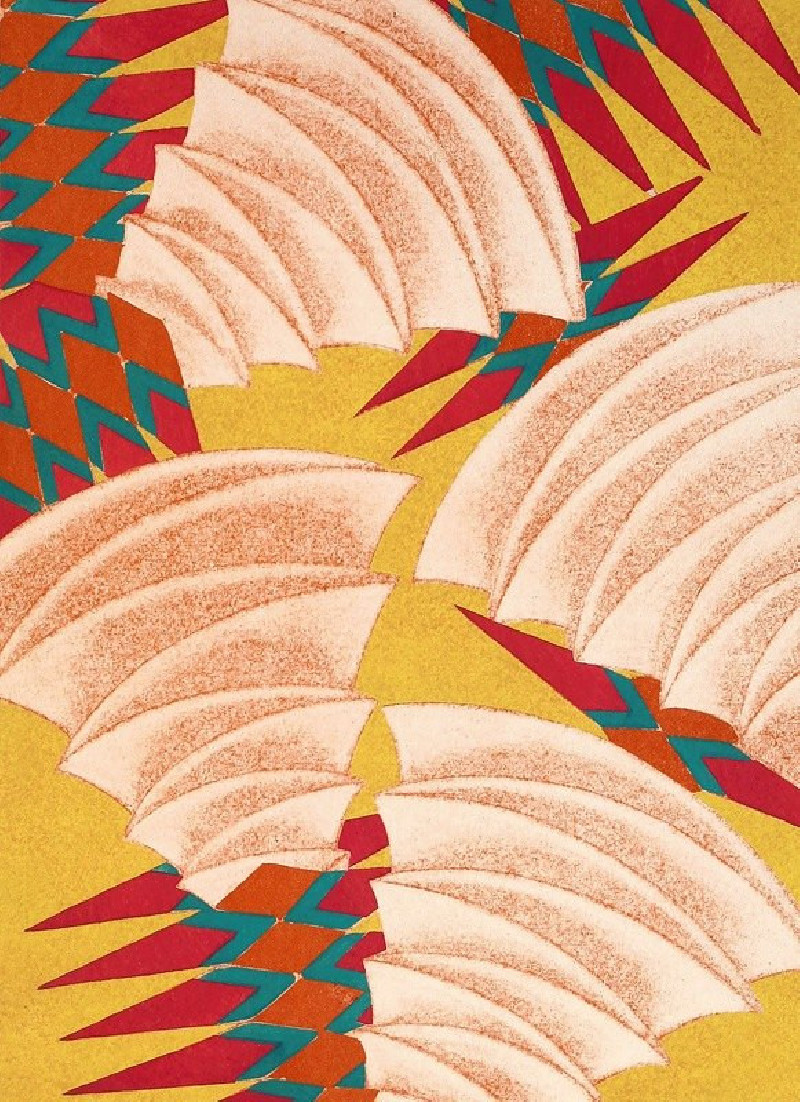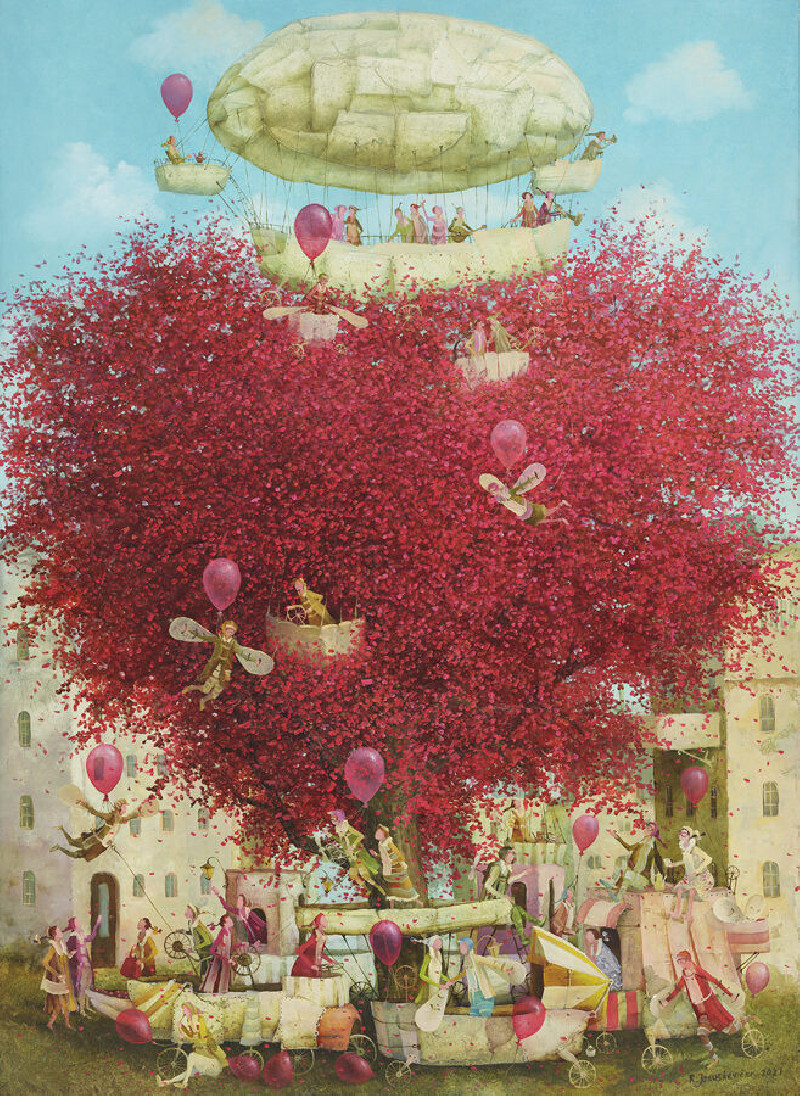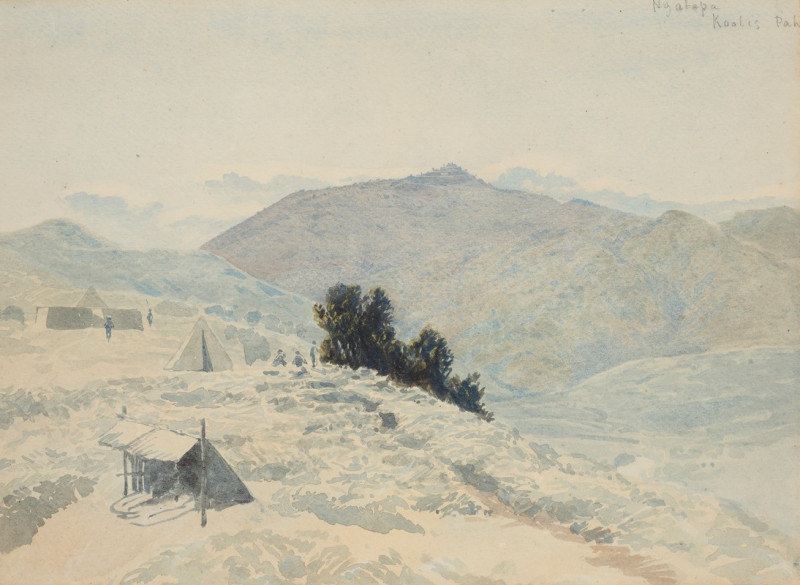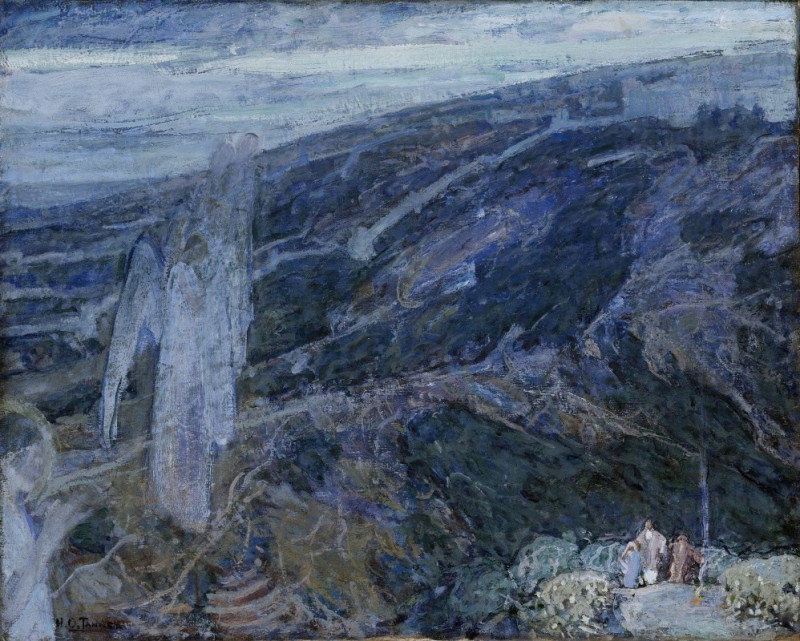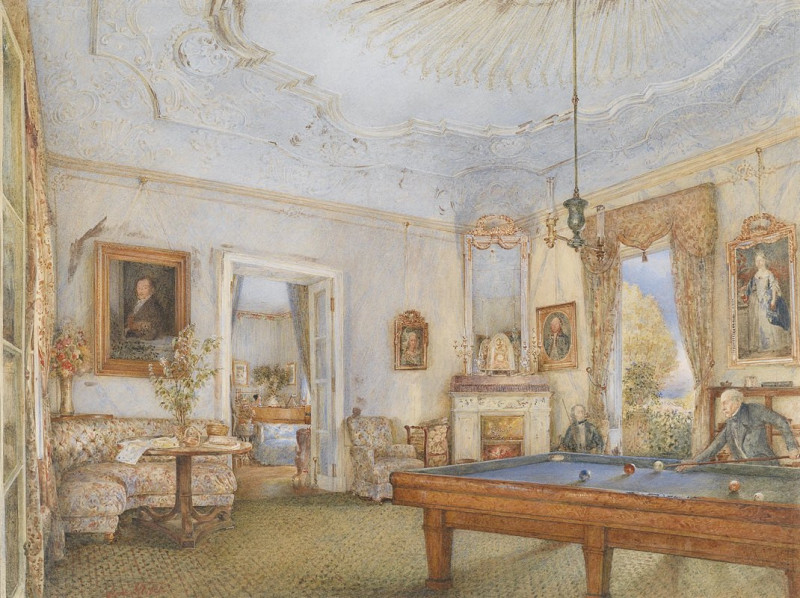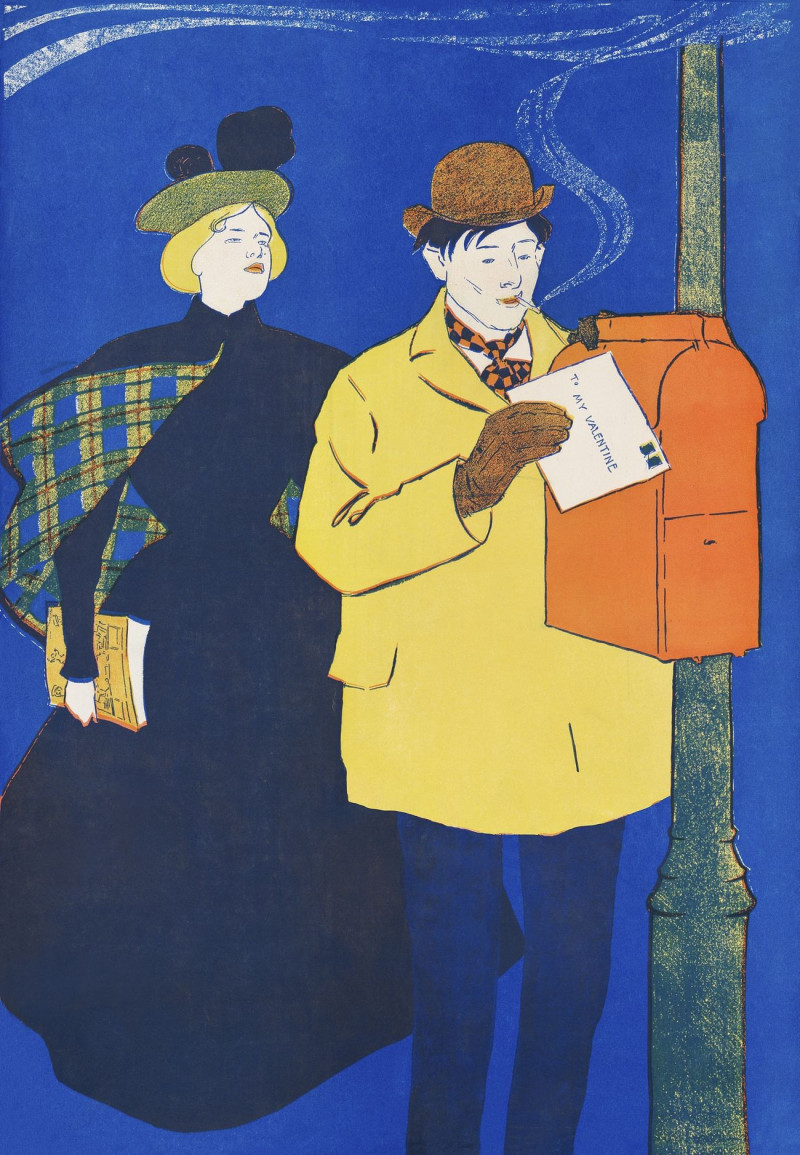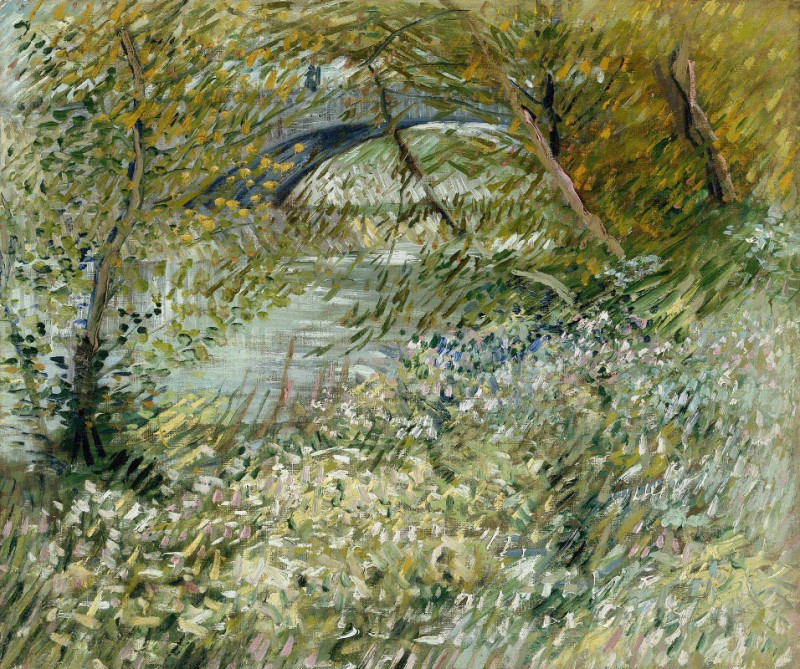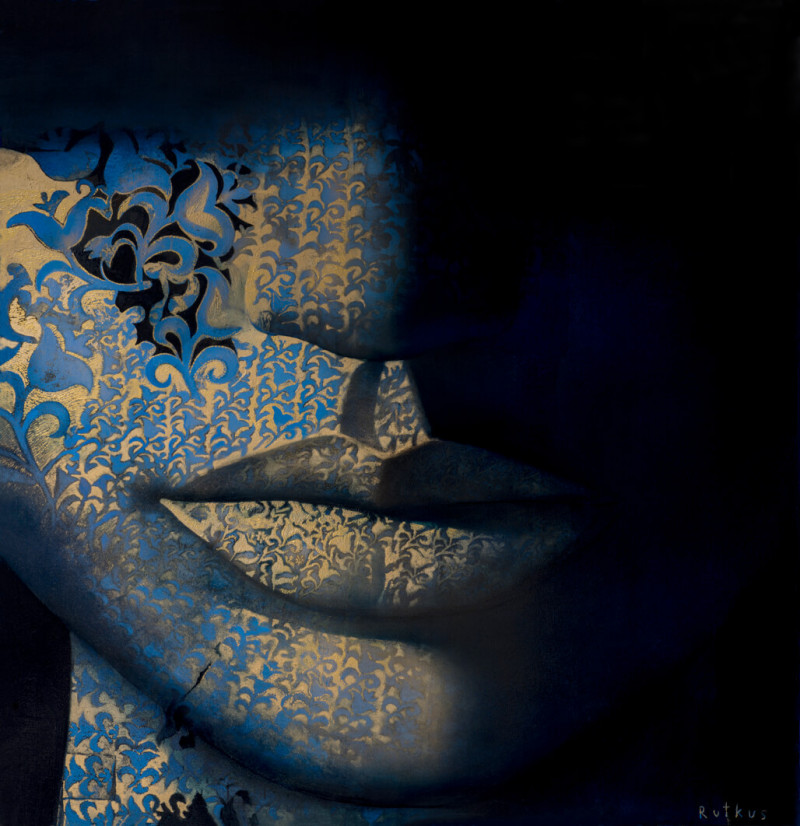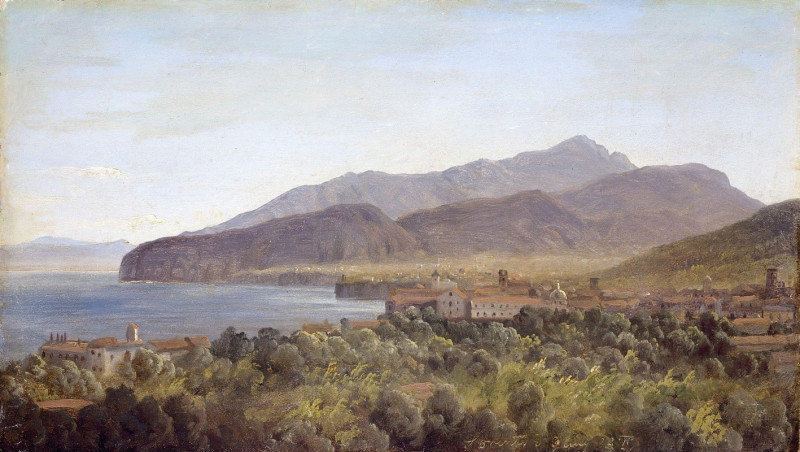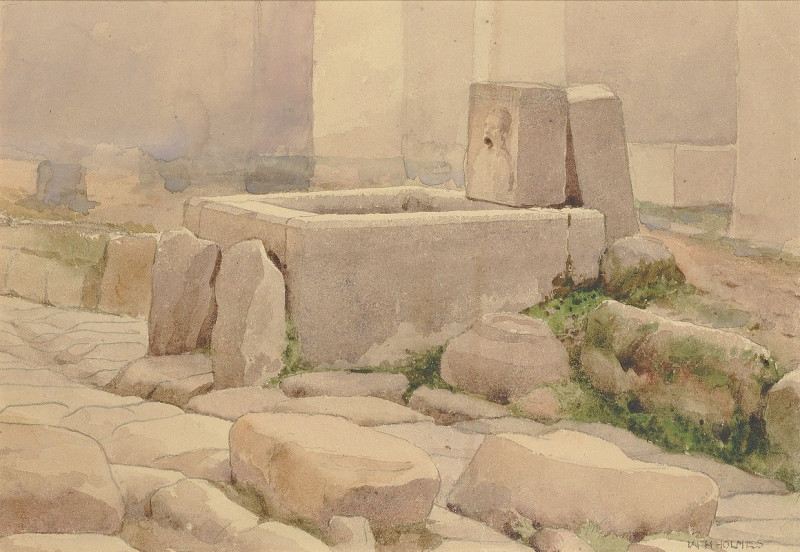Alley in the Evening (1930)
Technique: Giclée quality print
Recommended by our customers
More about this artwork
In the evocative painting "Alley in the Evening" by Ľudovít Čordák, completed in 1930, the artist masterfully captures a tranquil moment in a dusky, narrow alleyway. The work is characterized by a palette of deep browns and muted earth tones that evoke the shadows and fading light of evening. The architectural elements, featuring aged buildings with arched passageways, create a profound depth and perspective, guiding the viewer's eye through the composition.A lone figure, perhaps a passerby clad in dark clothing with a subtle hint of red, walks away from the viewer, adding a mysterious and almost enigmatic quality to the scene. This figure is central to the composition, offering a sense of scale and humanity amidst the imposing structures.The windows glowing with warm light suggest the presence of life beyond the visible, breathing a quiet liveliness into the otherwise somber alley.
Delivery
Returns
Ludwig Deutsch was an Austrian painter who settled in Paris and became a noted Orientalist artist.
Details of Ludwig Deutsch's life are obscure. He was born in Vienna in 1855 into a well-established Jewish family. His father Ignaz Deutsch was a financier at the Austrian court. He studied at the Vienna Academy of Fine Arts 1872–1875, then, in 1878, moved to Paris where he became strongly associated with Orientalism.


